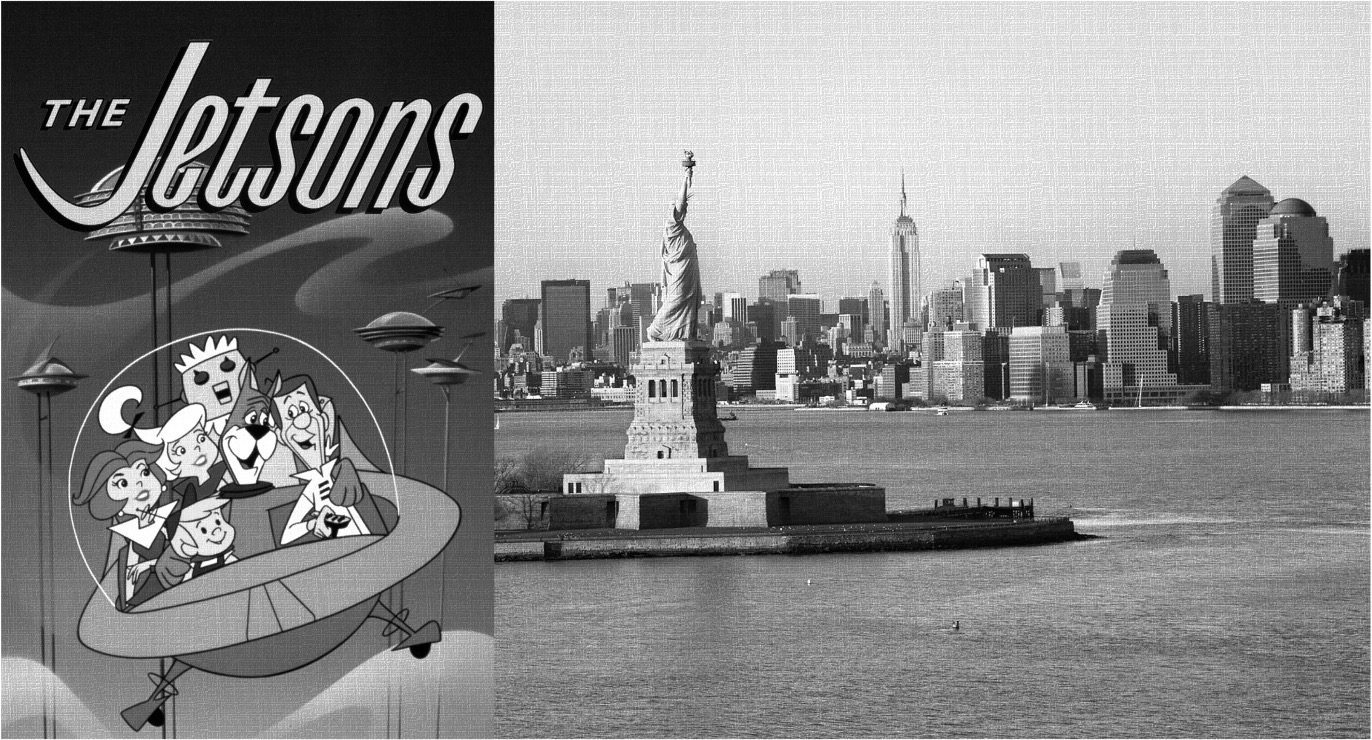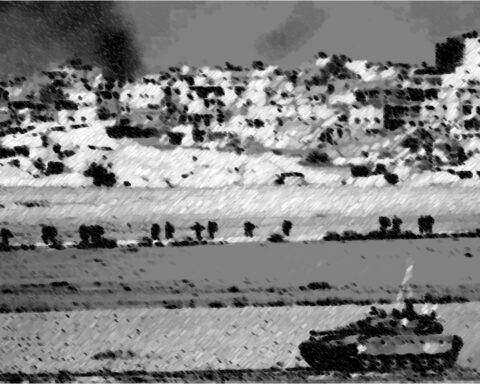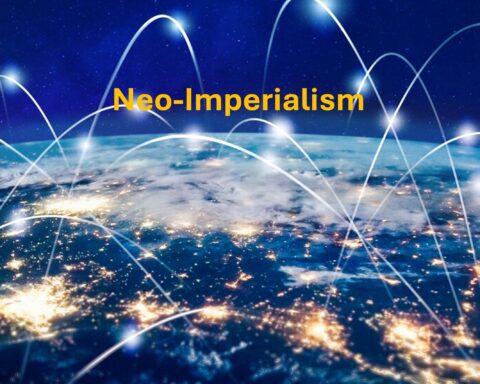We often say that days pass quickly, but we cannot overlook what each day brings! Those who watched the series “Space 1999” in the 1970s, what did they think in the year 2000? Such topics evoke different thoughts for everyone. You might see that many of the conveniences presented to you in the 2000s become reality. In the city, at home, while traveling, even in daily tasks. Those who watched the Apollo 11 crew return from space on tube TVs remember the capsule parachuting into the ocean. Naval ships and helicopters were there to retrieve the crew. Today, you can watch SpaceX’s reusable rockets take off and land vertically on a robotic barge at sea via the internet. The barge moves back and forth, but this time to avoid disturbing people. Another purpose is that if today you can land on a moving surface in water, tomorrow you could land on any asteroid’s surface. Of course, in this article, I won’t talk about the “Space 2070” series. I will talk about a lifestyle that is taking shape now but will be commonplace in cities, homes, travel, and even daily tasks. Ironically, let me put it this way: I’m going to talk about the world in the 2070 version of the 1960s cartoon “The Jetsons.”
Disparity
Income inequality is a universally accepted reality. The gap between citizens in any country has grown so large that it’s considered beyond mere financial calculations. Instead, discussions focus on whether lifestyles can be altered. Life cannot fully absorb what is ordinary, and people inevitably concern themselves with dictated differences. As a result, our narratives must be supported with utopian additions.
Consider this: In a country, those living at the top income level according to their standards make themselves unique in number and lifestyle, their 2070s will be described based on their current attributes. Simultaneously, think of another country with unimaginably higher values, their 2070s will be even more distinct. Looking from today to post-2070, people in Athens, Miami, or Dubai will live with vastly different values and standards. Politicians and business circles will discuss different topics. People will add more personalized values and criteria to their life predictions, diverging significantly from others.
In 1988, 207 million people formed the top 5% of earners worldwide. Considering population growth and innovations, this number reached 330 million in 2018, representing the top 1%. 40% of these global wealthy were Americans, followed by the British, Japanese, Germans, French, Italians, Canadians. This led to discussions about the G7 countries. The upper echelon in G7 represents over 80% globally. Urban Chinese joining this wealthy group is new; their share increased from 1.6% in 2008 to 5% in 2018. India and Indonesia in Asia started adding to this chain. Certain numbers of Russians, South Americans, and a few Africans are also seeking a place in this wealthy segment.
If we look at the global income distribution of Western countries over the last 30 years, every segment of the spectrum is filled, but the upper segments are disproportionately occupied. People with different global income scales correspond to different consumption patterns and norms, gradually becoming global standards. Others try to adapt to these global trends. This should be considered from both perspectives. Fashion is one aspect; the other is the development of special similarities in conflict-prone areas. This is enabled by social polarization created by increasing inequality.
Fast-forwarding time, the Covid-19 pandemic, the war in Ukraine, and importantly, countries like China and India heavily involved in the Industrial Revolution (or Golden Age of Innovation) almost caught up with the G7 countries in a short period between 2018-2023. Now, the global top 1% equally includes people from G7 and BRICS countries. Wealthy individuals from countries like South Korea and Singapore also joined this group. Thus, social polarization increased worldwide. However, looking at the current tableau and development beyond 2035, without a major leap or collapse, it seems the wealthy will more distinctly define their global norms. Not just in numbers, but the differences in societal layers and the impact of technology on life will create very different lifestyles. This prediction is based on the last 5-10 years’ rate of change. Continuing at this pace, we can start thinking about what might happen in 2070. This situation might apply at least to certain locales but could become a standard worldwide, potentially transforming all habits and practices.
One can closely examine the works of institutions like The Brookings Institution, McKinsey & Company, or the World Economic Forum. They tackle significant and deep-rooted projects, discussing them with leading thinkers to understand and shape the future. Such institutions are working on issues like city dynamics and the conveniences and systems people might need, work areas, and interactions. Investors who value research shape the process through their R&D investments. Eventually, even if not exactly as targeted, the directions, investments, prepared infrastructure, and technical equipment pull humanity towards those points. The hardest part might be the power dynamics. One side might try to stop or slow down the other, creating obstacles to prevent them from advancing comfortably. Conversely, one side might receive unexpected support and accelerate. Ultimately, these developments turn into mega-projects aimed at constructing global marginal issues. In summary, globalization is evolving and advancing in its own trajectory.
Global technology companies invest more than many countries’ GDPs. Look at the R&D budget allocation. Companies like Alphabet, Amazon, Apple, Meta, and Microsoft are virtually burning money. For what? Let those who call this globalist, imperialist, capitalist from their armchairs ponder. Investments, especially in artificial intelligence, are extremely high-budgeted. Their various products will lead us to completely abandon what we know today.
China’s current projects appear to be concluding by 2049, after which we can expect to see new ones. Another area of interest for me regarding China is their advancements in quantum computing, internet, cloud technologies, and space projects. The Saudis are building King Abdullah Economic City and Neom City. India is developing the Delhi-Mumbai Industrial Corridor, while the European continent is constructing the TENT-T Core Transport Network. On the other hand, the International Space Station project is underway. In the U.S., there’s the California Hyperloop project. Malaysia is working on the Forest City project, and Qatar is developing the Silk City project. A new region is being constructed in Dubai. Most of these projects I’ve mentioned are valued at over 100 billion dollars, with a few in the 500-600 billion dollar range. My point here is not just the size of the budgets but that these new investments are elevating the world from one level to another, bringing changes in everything from finance to social life, and we can already predict where people’s hearts will be.
Global Mega-Cities Network
I first learned about the significant emphasis on the concept of the city from Ronald Reagan. I followed this from other sources and, while placing global thoughts in their proper context, shifted the discussion to mega-cities. Henry Kissinger also didn’t overlook the city issue. In Reagan’s farewell speech in 1989, as he was leaving office, he gave America a vision:
"Throughout my political life, I have spoken of a shining city, but I wonder if I have adequately conveyed what I meant. The city I had in mind is built upon rocks stronger than oceans, wind-swept, God-blessed, and teeming with people of all kinds living in harmony and peace. A city with free ports humming with trade and creativity; if walls are necessary, then walls with doors, open to anyone with the will and heart to enter. That's how I envisioned it, and I still do."
I think one of the most prominent issues in the future will be mega-cities; yet, they will be cities connected to each other through a special global network, separate from their nations.
What can emerge from this? Think about this in combination with Reagan’s city metaphor. The expectation seems to be towards building a global life connected to a network of mega-cities. In the centers of these mega-cities, there will be “super” lifestyles. This is called the Global Mega-Cities Network. Those outside this network will likely remain tied to the national system. Within the Global Mega-Cities Network, rapid processes, designs, standard and value setting, production or outsourcing, and presenting future phenomena to people will be commonplace. Everything used by those in this system will be related to the latest technologies. Transportation, communication, capacity, etc., will be at an advanced level. The conditions of those living from the immediate outskirts of the mega-cities to rural areas will be likened to countryside structures.
Considering the developments beginning to appear in our vision, it seems likely that a distinct administrative structure will develop on a global scale in mega-cities, including current city-states, which are in intense interaction with each other. Which are the example mega-cities? New York, Paris, London, Singapore, Dubai, Tokyo, Mumbai, Delhi, Shanghai, Hong Kong, Moscow, Frankfurt, Milan, Mexico City, Seoul, among more than 350 cities, are likely to create a global synergy in strategic, political, economic, technological, production, and communication fields due to their intense interconnections over time.
Global Perception of Common Spaces in Mega-Cities
First, let me highlight a few points about the concept of the city. Urban spaces are often seen merely as quantitative areas. Urban commons include roads, water, electricity, internet, public transportation, security, etc. Thus, aspects like the formation of quantity, its value, function, beneficiaries, and potential divisions in the context of commonality can be considered. The most apparent point is the segregation of common issues. My view is this: in nation-states, cities could accept their commons, whether rightly or wrongly, and their tolerance levels became part of the country’s culture. However, the influence of strong globalization trends is also dragging global commons along. This necessitates a separate space for global commons. This emerging perception of global common spaces suggests a redefinition and enrichment of quantities along with their counterparts, leading us to propose a new definition. This is the phenomenon of creating a bond among those meeting in the global commons. In this case, cities within nations (including city-states) could simultaneously host both national and global urban commons. For example, the commons of a mega-city connected to the global network depend on its own characteristics, capacity, needs, and dynamics. At the same time, other sections of the city, which we can call the outskirts, may continue to be part of the existing system; of course, this includes the ghettos in some cities. The common quantities in the outskirts may be related to the nation-state, while the design, operation, and equipment of the central commons might be defined in relation to equivalent commons on the other side of the world.
Today’s major cities are essentially the focal points created by industrialization and play a functional role in designing power balances both within themselves and in national politics. Factories, mass housing, commercial centers, etc., have created this industrial revolution city logic. What’s changing? The supply-demand functions of globalization. Globalization also triggers different mechanisms in politics, which is essential to understand. Perhaps the protectionist efforts of some groups are due to their concerns about the excessive development of these innovations. The emergence of new political currents in cities might be attributed to such complexities.
I’m not sure if Chinese leaders are considering all this. However, it seems that they are based on a nation-state logic under the Communist Party’s administration. Yet, they intend to maintain controlled global engagements, and their policies indicate such a development. For instance, their logic in turning cities into “prisons” during the Covid-19 process, aiming for excessive control and strengthening the state system in all aspects, is a significant factor. However, as mega-cities share common features in the global supply-demand balance, even if over-controlled, it appears that current politicians will adjust some opportunities accordingly.
In the beginning, ancient cities were closed spaces surrounded by walls. With industrialization, cities expanded, and the characteristics of their multiplying districts developed, yet they remained closed, governed by their municipal administrations and the culture of their inhabitants. Today, with globalization, the perception of space has also globalized, as the commons within similar mega-cities are interconnected. If we were to speak of metaphorical walls, we might now sense vague walls being built between the centers of cities and their outskirts (and ghettos in some cases). Additionally, the global network of mega-cities reveals a new inter-spatial system. While ancient cities had one gate, today, for example, someone entering the virtual gate of a mega-city in New York can exit through a gate in Mumbai. Doors, walls, and other structures are now defined in terms of their connection to the virtual network. The Digital Age has created significant functionality in this regard.
Another related issue is corruption. Corruption according to whom or what? From now on, in new forms of discussion or conflict between the global and the other, meaningful and coherent arguments will find their place. What is corrupt in the center may seem corrupt in the outskirts, and vice versa. Ghettos are like ticking time bombs. Even within these two, we should now consider that new currents tied to their commons could propose new definitions of corruption.
Now, let’s address the development of the global system, social contract, and the relationship of sovereign power. The primary outcome of the global system’s development is the global mega-cities network, and we should consider how individuals and administrations might interact in this context. Here, the global investor function involves the contract made with the state and its authorization, and it’s evident that this new integration is becoming more pronounced. The global system operates contractually with the state. In other words, the state exercises its authority, and the citizen is excluded. The global system obeys only the state. This external power element brings or takes away global force as necessary, so its obligations are variable. On the other hand, the citizen-to-citizen contract and the powers given to sovereign authority remain the same. What’s added here is a structure like the global mega-cities network with its unique characteristics. Thus, the system gains an additional social contract and new obligations.
The special status and lifestyle of global mega-cities evolve naturally, yet the necessary definitions for a new system can be established accordingly. The development of the global system can only be realized with the establishment of these additional administrative structures and life understandings.
Global Hybrid Management System
Thinking about the 2070s and beyond, the divide between people living in perfect conditions and those in dire circumstances will widen so significantly that it will inevitably bring along diverse cultural explanations, lifestyle patterns, expectations, desires, fears, and so on. We can use such a description to encapsulate these aspects.
In my opinion, it might be necessary to re-discuss politics. Are we ready for this now? Can the political structures of different countries support potential developments at this point? For instance, if the Saudis connect Jeddah, Riyadh, and Neom, and the United Arab Emirates connect Dubai, and Qatar connects Doha to this network, but Moscow remains a global-outskirt, then this is something that needs to be explained with today’s vision.
A key issue arises here: how can a policy that supports the logic of a Global Mega-City Network be realized? We are still emphasizing the value of fundamental concepts like the “nation system” and “constitutional democracy.” These were the subjects we previously discussed. But there’s an additional detail: the issue of education. While people in the Global Mega-City Network are subject to high-level education and training and attract talents from all over the world, the educational programs for those outside this network are likely to remain as they are. This situation appears to lead to a significant distinction in human resources, leadership, and technical capacity. If some political and legal matters remain excessively debated by those outside the current global urban centers without reaching a conclusion, what kind of problems could arise, say, in the year 2123? Cities like Paris, London, and Frankfurt in Europe will undoubtedly be able to make the necessary adjustments; national or federal parliaments will be able to quickly enact all legal regulations during this transition period, and some may even set examples with preliminary studies. However, those who resist or refuse to adapt will face alternative movements. Some countries and their mega-cities, perhaps in the context of “backwardness,” will import rules from others but may not fully internalize the philosophy and spirit of these practices, and thus, never achieve the expected level of efficiency. Consequently, most people will grapple with the problems of not fully understanding and integrating into this described Global Hybrid Management System, including what new democracy is, how to build an efficient city, how to maximize yield from agricultural areas, how to utilize cheap and efficient energy sources, how the market economy based on global supply-demand balances, new types of products, and habits works, how to add value to the currency, the new practice of sustainable nation-state structure, and how to develop and benefit from human resources. Some people might join forces with those resisting developments, fighting a kind of battle, perhaps becoming targets for others.
Conclusion: Rationality
In such developments, those who act rationally differ from others. This conclusion is valid for almost everyone, whether Eastern or Western. These can be achieved with step-by-step actions, layering, and accumulated gains. If you’re discussing it today, you’ll discuss it more tomorrow; that’s the basic truth. If you don’t govern large areas of debate with intelligence and vision, you might also fall victim to time and the revolutionary changes it brings. For example, the Enlightenment and the industrial revolutions were turning points that led many advancements. Progress in philosophy, arts, literature, and science is linked to them. Even if there seem to be problems with today’s evolving understanding from certain perspectives, a rational approach will solve them.
If you never had a complete feudal structure, you wouldn’t understand aristocracy, if you never had aristocrats, you wouldn’t understand bourgeoisie, if you never had a proper union, you wouldn’t understand a real labor party or leftism; you would just copy others. You can also look at this as imported political thinking. If you haven’t undergone a complete industrial revolution, you can’t be a leader in production; if you’re not a full capitalist, you don’t know how to make money and increase capital; if you did these things incompletely or temporarily adopted some values, you can’t think about how to operate a newly defined regime, how to move to advanced stages; your climate remains cloudy, floods come and wash away what you have. If you weren’t a main actor in the industrial revolution, it doesn’t mean you’re defeated. What does it mean? You become someone who can’t approach with rational thought, analyze well, accept developments, perhaps accustomed to easy gains, and just getting by. If your societal adaptation ability is weak, compared to others, you will have to accept not only what you couldn’t do but also your deficiencies. If life isn’t fully digested by you, it gnaws at you and then swallows you; don’t forget this. To progress steadily, one must act carefully and be conscious at every stage.








